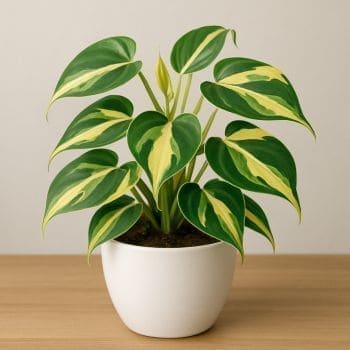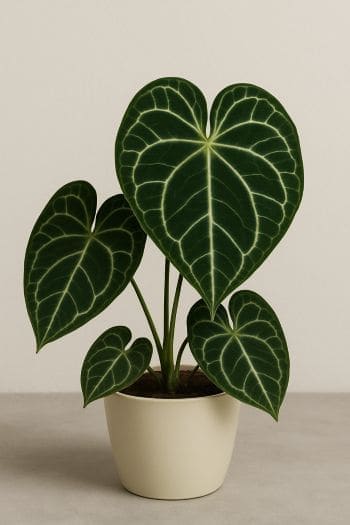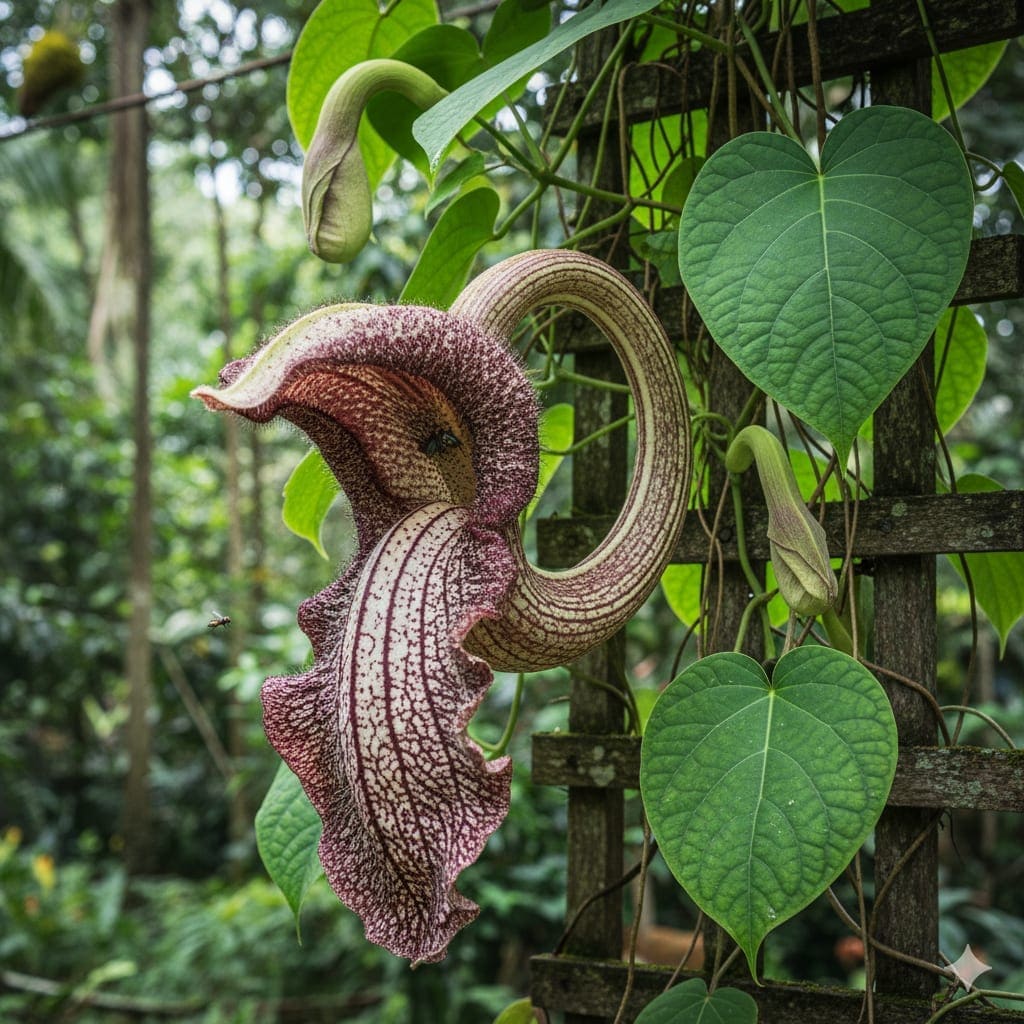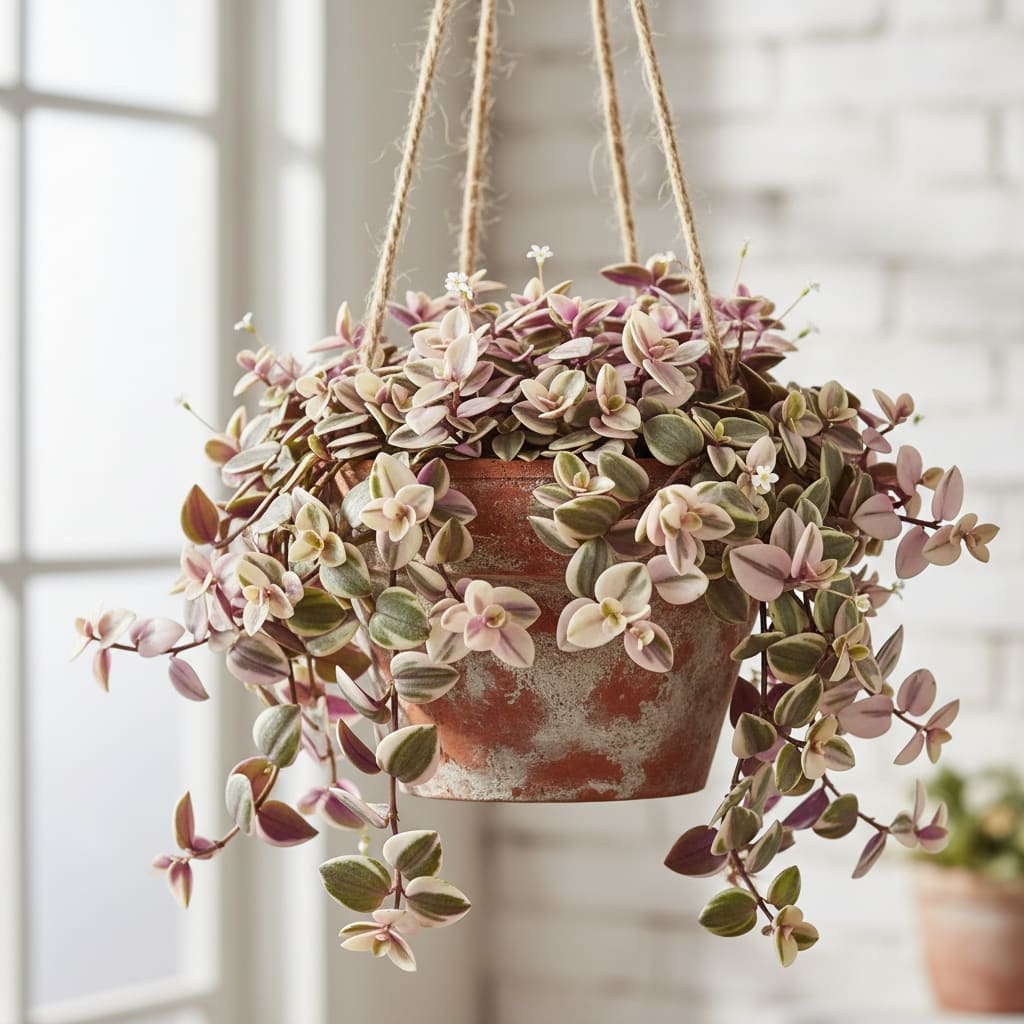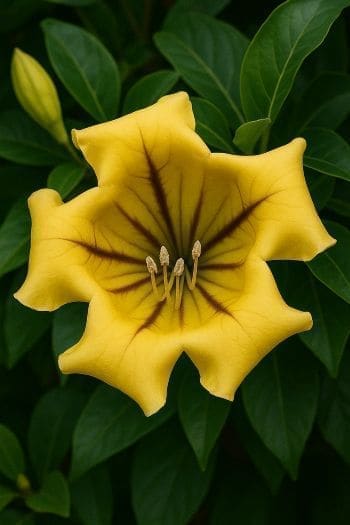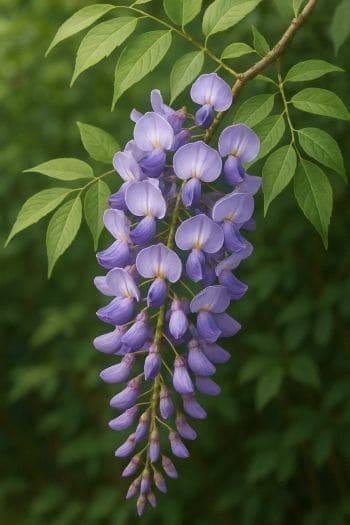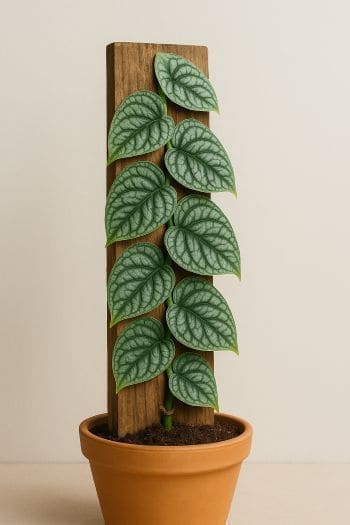Philodendron hederaceum ‘Cream Splash’ Care & Growing Guide
Overview
Philodendron hederaceum ‘Cream Splash’ is a striking variegated cultivar of the popular heartleaf philodendron, native to the tropical forests of Central and South America. Known for its cascading vines adorned with heart-shaped leaves splashed with creamy-white and light green patterns, it is a favorite among indoor plant enthusiasts. This tropical aroid thrives in bright, indirect light and moderate watering, making it a relatively easy-care choice for both beginners and seasoned collectors.
In its native habitat, this species grows as an understory climber or trailer, using aerial roots to attach to trees. Indoors, it can be styled as a trailing plant in a hanging basket or trained upward on a moss pole or trellis.
Identification & Growth Habit
The ‘Cream Splash’ variety is recognized by its elongated heart-shaped leaves with a central splash of creamy-white variegation, often flanked by lighter green zones and darker green margins. Leaves typically measure 2–4 inches wide when young, expanding with maturity. The plant exhibits a vining growth habit, producing long, flexible stems that can trail gracefully or climb when given support.
- Leaf texture: Smooth and slightly glossy.
- Growth rate: Moderate under ideal conditions.
- Habit: Trailing or climbing via aerial roots.
Light & Placement
Provide bright, indirect light to maintain vibrant variegation. Place near an east- or north-facing window, or a few feet back from a bright south- or west-facing window with sheer curtains. Direct midday sun can scorch the leaves, while prolonged low light may cause the creamy variegation to fade.
Rotate the plant every few weeks to encourage even growth and prevent leaning toward the light source.
Watering & Humidity
Water when the top 2 inches (5 cm) of soil feel dry to the touch. Use room-temperature water and ensure excess water drains freely from the pot. Avoid letting the plant sit in water, as this can lead to root rot.
This philodendron prefers moderate to high humidity (50–70%). In dry indoor environments, especially during winter heating, increase humidity by:
- Using a humidifier nearby.
- Placing the pot on a pebble tray with water (without submerging the base).
- Grouping plants together to create a microclimate.
Soil & Repotting
Use a well-draining aroid mix composed of peat or coco coir, perlite, and orchid bark. This blend provides aeration and prevents waterlogging. Repot every 1–2 years in spring when roots begin to circle the pot or emerge from drainage holes. Choose a pot only 1–2 inches larger in diameter to avoid excess soil that can retain too much moisture.
Fertilizing
Feed monthly during the active growing season (spring and summer) with a balanced liquid fertilizer diluted to half strength. Reduce feeding to every 6–8 weeks in fall and winter when growth slows. Overfertilization can cause salt buildup and leaf tip burn.
Pruning & Training
Prune to control length, encourage bushier growth, and remove damaged or yellowing leaves. Use clean, sharp scissors or pruning shears to cut just above a node.
Training on a Trellis or Moss Pole
- Insert a moss pole or trellis into the pot near the plant’s base.
- Gently secure vines with soft ties or plant clips.
- Mist the moss pole periodically to encourage aerial roots to attach.
Propagation
Philodendron ‘Cream Splash’ propagates readily from stem cuttings. Here’s a step-by-step guide:
- Select a healthy vine with at least one node and one or two leaves.
- Using sterilized scissors, cut just below the node.
- Remove any leaves that would sit below the water or soil line.
- Water method: Place the cutting in a jar of clean water, ensuring the node is submerged. Change water every few days until roots are 1–2 inches long, then pot in well-draining soil.
- Soil method: Plant the cutting directly into moist aroid mix, keep humidity high, and avoid overwatering until roots establish.
Common Problems
Pests
- Spider mites: Look for fine webbing and stippled leaves. Treat with insecticidal soap or neem oil.
- Mealybugs: White, cottony clusters on stems and leaf nodes. Remove manually and treat with horticultural oil.
- Scale insects: Brown, shell-like bumps. Scrape off gently and use systemic insecticide if needed.
Diseases
- Root rot: Caused by overwatering and poor drainage. Remove affected roots, repot in fresh soil, and adjust watering practices.
- Leaf spot: Fungal or bacterial; remove affected leaves and improve air circulation.
Toxicity & Pet Safety
Philodendron hederaceum ‘Cream Splash’ is toxic to cats, dogs, and humans if ingested due to calcium oxalate crystals. Keep out of reach of pets and children, and wear gloves when pruning if you have sensitive skin.
Styling & Decor Tips
- Hang in a macramé planter to showcase trailing vines.
- Train upward on a moss pole for a vertical accent in small spaces.
- Combine with other variegated plants for a dynamic display.
- Place against a plain wall to highlight the leaf patterns.
Varieties & Cultivars
Philodendron hederaceum has several popular cultivars, including:
- ‘Brasil’: Green leaves with a bold yellow center stripe.
- ‘Micans’: Velvety, deep green leaves with bronze undertones.
- ‘Lemon Lime’: Bright chartreuse foliage.
‘Cream Splash’ is prized for its softer, creamy variegation compared to the vivid yellow of ‘Brasil’.
Buying Tips & Maturity
When purchasing, look for plants with multiple vines, healthy leaves free of spots, and no signs of pests. Variegation patterns can vary; choose a specimen with the level of cream coloration you prefer. With proper care, vines can reach several feet in length over a few years.
Seasonal Care
- Spring/Summer: Active growth; increase watering frequency, fertilize monthly, and consider repotting if rootbound.
- Fall/Winter: Growth slows; reduce watering and feeding. Maintain humidity and protect from cold drafts.
FAQ
- How fast does Philodendron ‘Cream Splash’ grow?
Growth is moderate; expect noticeable lengthening of vines during spring and summer under ideal conditions. - Can it tolerate low light?
It can survive in lower light but variegation may fade and growth may slow. - Should I mist the leaves?
Occasional misting can help with humidity, but avoid leaving leaves wet for prolonged periods to prevent fungal issues. - Why are my leaves turning yellow?
Common causes include overwatering, poor drainage, or natural aging of older leaves. - Can I grow it outdoors?
In frost-free, humid climates, it can be grown outdoors in shaded areas. Protect from direct sun and cold temperatures.
